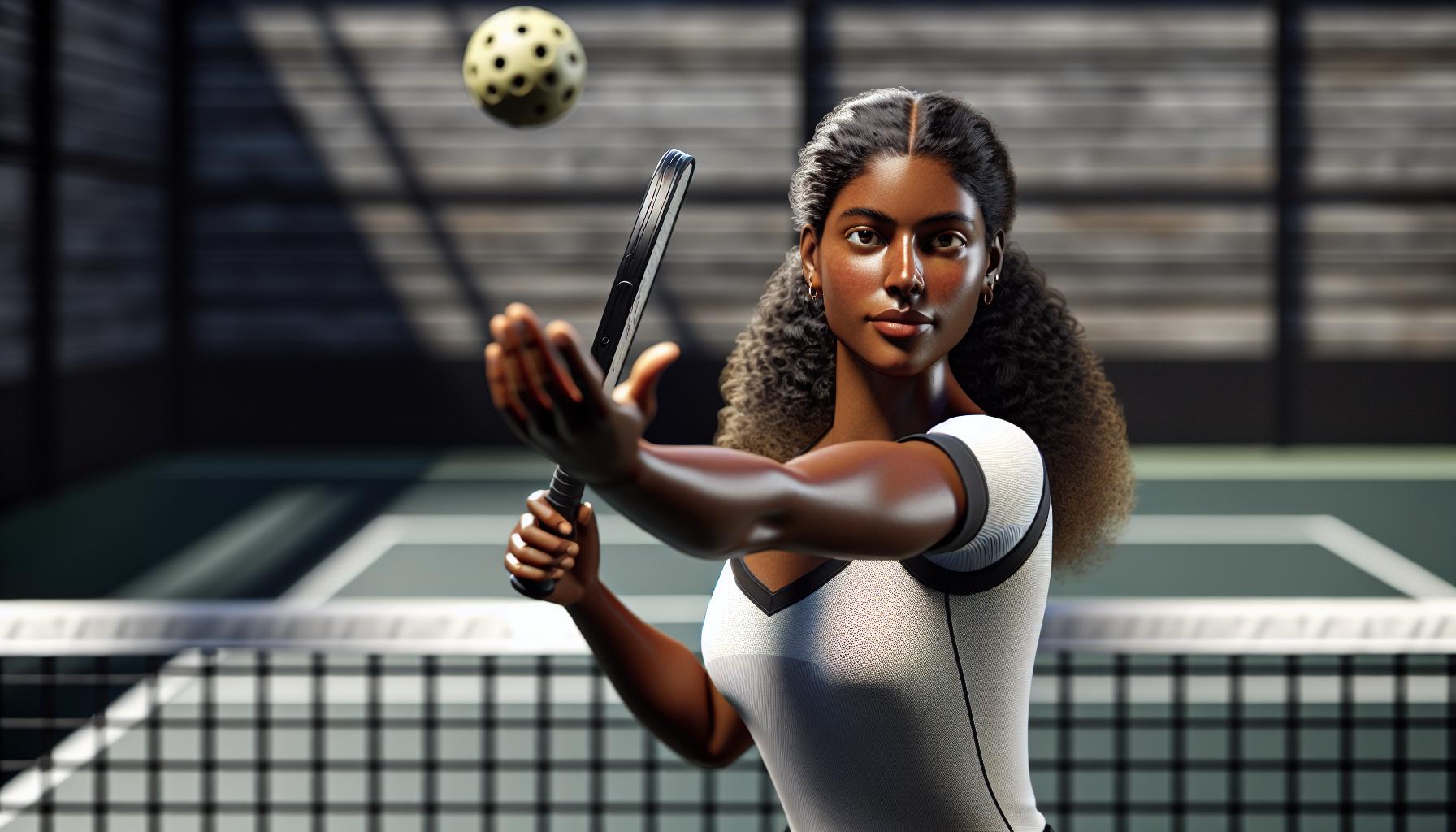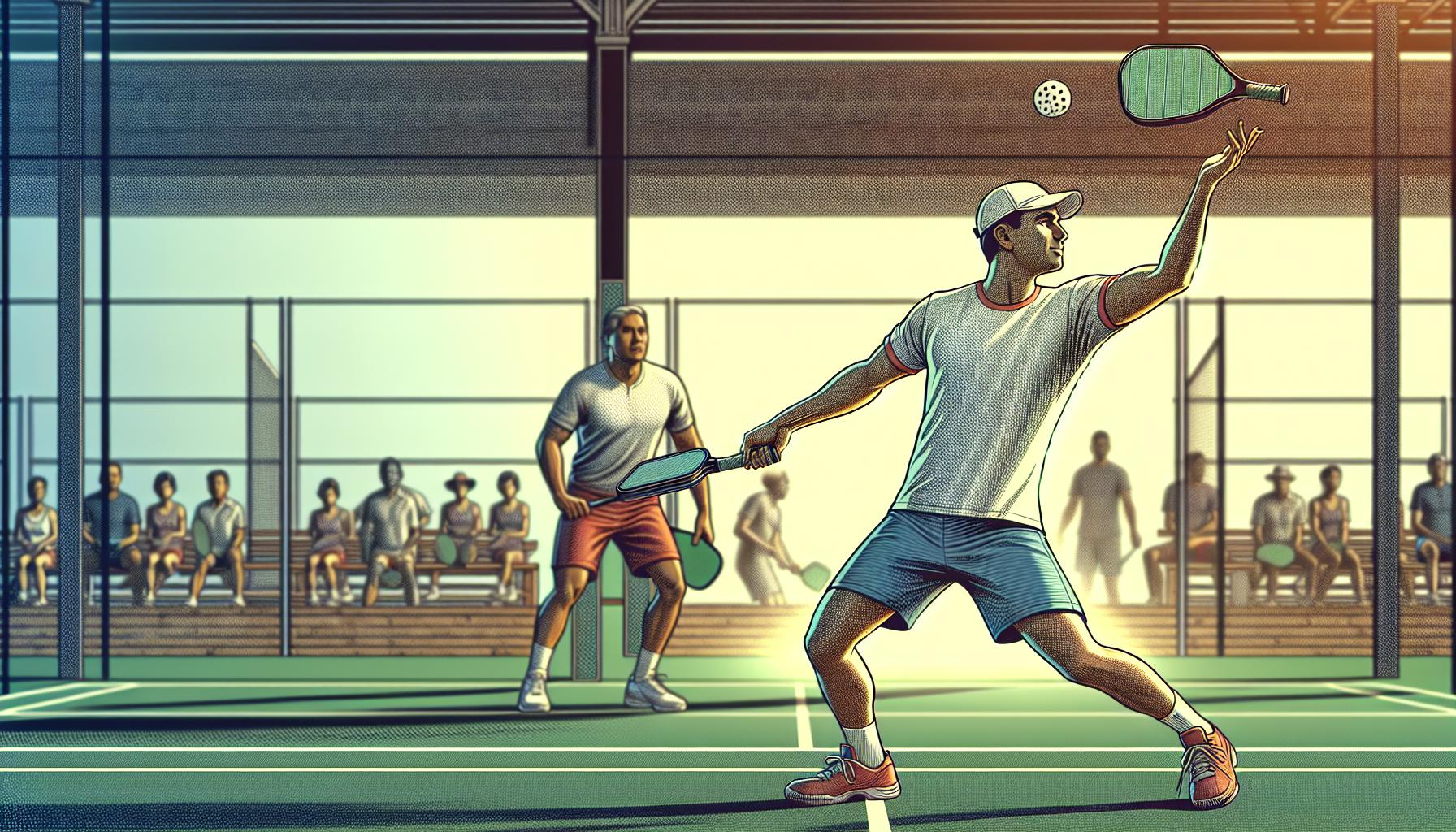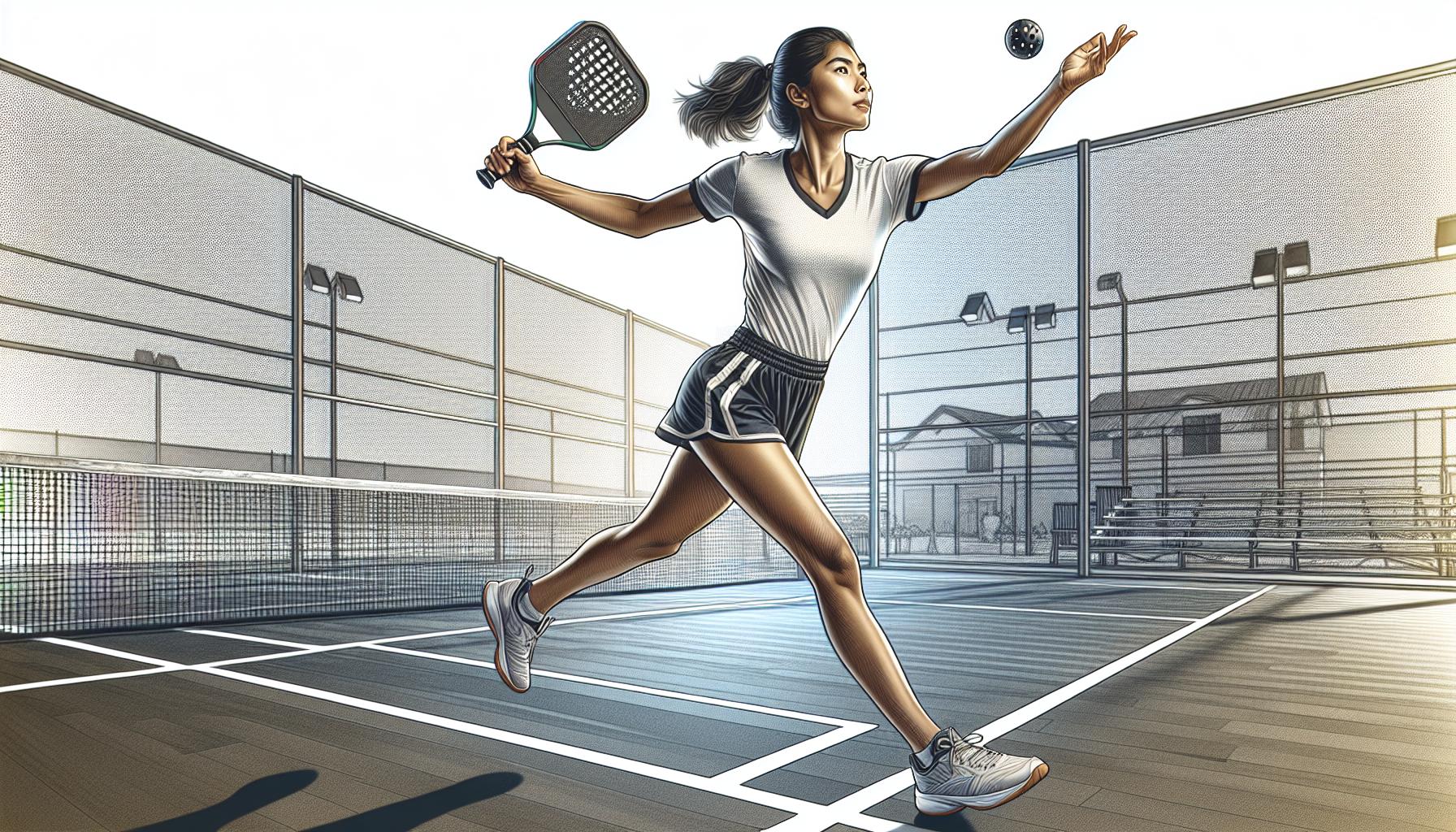Pickleball, a sport that’s taken the world by storm, combines elements of tennis, badminton, and ping-pong, creating a unique and addictive game. But as casual play shifts to competitive, understanding the nuances of serving rules becomes crucial. These rules not only level the playing field but also add a strategic depth to the game.
Serving in pickleball isn’t just about getting the ball over the net. It’s about mastering the art of placement, spin, and power, all while adhering to a specific set of regulations designed for fair play. Whether you’re a seasoned player or new to the competitive scene, grasping these serving rules can make or break your game. Let’s dive into the world of pickleball serving rules for competitive play, where precision meets strategy.
The Importance of Serving Rules in Competitive Play
In the world of pickleball, serving isn’t just about putting the ball into play; it’s a crucial skill that can set the tone for the entire game. As players transition from casual to competitive play, understanding and mastering the serving rules become paramount. These rules aren’t just arbitrary constraints but tools designed to level the playing field and inject strategic depth into the game.
Serving rules in pickleball are designed with fairness and skill development in mind. For instance, the requirement to serve diagonally across the court ensures that both players or teams have an equal opportunity right from the start. Additionally, the double bounce rule—which dictates that the ball must bounce once on each side before volleys are allowed—slows down the pace, allowing players to position themselves strategically. This pacing is crucial for competitive play, where positioning and strategy often determine the winners.
Moreover, the intricacies of serving in pickleball allow players to showcase and develop their skills. A serve isn’t just a serve; it’s an opportunity to gain an advantage. Skilled players use a variety of serves—like the soft serve to pull opponents forward, or the power serve to push them back—to dictate the flow of the game. The power to control the game, even if just for a moment, shifts significantly with each serve, emphasizing the importance of mastering this aspect of play.
Regulations regarding the serve’s execution further contribute to the game’s competitive integrity. For example, the ball must be hit underhand with the paddle below the waist, and the server must keep both feet behind the baseline until the ball is struck. These conditions prevent excessively powerful serves, ensuring that the receiver has a fair chance to return the serve. Such rules not only make the game more inclusive by accommodating players of various skill levels but also challenge experienced players to finesomize their techniques within these constraints.
Players must also be aware of the faults that can occur during serving, such as foot faults or serving before the score is called. These details might seem minor, but they can have significant implications in a competitive match where every point is critical. Learning to serve within the tight constraints of the rules requires discipline and practice, traits that are invaluable in competitive play.
Understanding the Basics of Pickleball Serving

In pickleball, serving is more than just a way to start the game; it’s a fundamental skill that sets the stage for each point. For beginners and seasoned players alike, mastering the basics of serving is crucial for competitive play. Serving correctly can significantly impact the game, influencing both the server’s strategy and the opponent’s response.
At its core, a pickleball serve must be made underhand with the paddle below the waist. This rule ensures that serves are not overly aggressive, keeping the game accessible and enjoyable. The ball must also be hit in the air without bouncing, adding a layer of skill and precision to the serve. This requirement separates pickleball from many racquet sports where the server has the liberty to bounce the ball before serving.
Another key aspect of serving in pickleball is the double bounce rule. After the serve, the ball must bounce once on the receiver’s side, and similarly, when the ball is returned, it must bounce once on the server’s side before volleys can begin. This rule slows down the game slightly, giving players a chance to strategize and position themselves ideally for the next move.
| Rule | Description |
|---|---|
| Underhand Serving | The serve must be made with the paddle below the waist. |
| No Bounce Before Serving | The ball must be hit in the air without bouncing. |
| Double Bounce Rule | The ball must bounce once on each side before volleys begin. |
To serve correctly in pickleball, players must also serve diagonally, aiming for the service box opposite their standing position. If the serve lands outside this area, it’s considered a fault, resulting in a loss of serve or a point for the opponent, depending on whether it was the serving team’s first or second serve.
Positioning during the serve is another aspect governed by precise rules. Serving players must stay behind the baseline while serving and are not allowed to step on or over the line until after they have hit the ball. This rule is crucial for maintaining fairness and balance between the serving and receiving teams.
Key Components of a Legal Serve

In the competitive realm of pickleball, understanding the key components of a legal serve can significantly influence a player’s performance. A serve that complies with the rules ensures the game progresses fairly and adds a strategic layer to each player’s approach.
First and foremost, the service motion is critical. The rules stipulate the serve must be executed with an underhand stroke. This means the paddle must contact the ball below the waist level. Specifically, the highest point of the paddle’s swing arc cannot be above the server’s wrist. This restriction ensures the serve remains accessible to players of all skill levels and maintains the sport’s emphasis on skill over power.
Equally important is the point of contact. The player must hit the ball in the air, without letting it bounce. This rule challenges players to master their timing and control, adding a level of difficulty to the serve. It also keeps the game pace brisk, as players can’t take too much time setting up their serves.
Another critical component is the serving position. Players must serve from behind the baseline, within the confines of the serving area. This area is defined by the baseline and the centerline extending from the baseline to the net. The foot fault rule comes into play here; if a player’s foot touches the baseline or the court before the ball is hit, the serve is considered illegal. This rule emphasizes the importance of spatial awareness and precision in foot placement.
The serve must also land diagonally across the court in the opponent’s service court. If the serve lands outside the correct service area, it is considered a fault. This requirement adds a strategic angle to serving, as players must aim and adjust their serve according to their position and the opponents’ potential weaknesses.
To illustrate the frequency of common serving errors in competitive play, a brief overview of statistics reflects interesting insights:
| Serving Error | Percentage |
|---|---|
| Foot Faults | 15% |
| Non-diagonal Serves | 20% |
| Serve Not Underhand | 5% |
| Ball Bounced | 10% |
These statistics shed light on areas where players frequently make mistakes, emphasizing the parts of serving that may require extra focus in practice.
Strategies for Mastering Different Types of Serves

Mastering the serve in pickleball is not just about following the rules; it’s about using the serve strategically to gain an advantage. Different serves can be employed to keep opponents guessing and to exploit weaknesses in their game. Here’s a look at how players can develop proficiency in various serving techniques.
Soft Serve: The soft serve is a key strategy for players aiming to reduce their opponent’s attack opportunities. By gently lobbing the ball, the server forces the receiver to move forward, disrupting their positioning. Practice is essential for perfecting the soft serve’s arc and placement, making it difficult for the opponent to execute a powerful return.
Power Serve: Contrasting the soft serve, the power serve focuses on speed and depth, pushing the opponent back to the baseline. Players should aim to hit the ball at the highest point of their reach, utilizing the snap of the wrist to impart maximum velocity. Mastery of this serve requires a balance between power and control to ensure the ball lands within the service court.
Spin Serve: Adding spin to a serve introduces unpredictability, making the ball’s trajectory and bounce difficult to anticipate. Players can experiment with topspin, which dives downwards, or sidespin, which veers off to one side. Practicing the spin serve involves refining wrist movement and timing to achieve the desired spin effect.
Placement Serve: The placement serve targets specific areas of the service court to exploit the opponent’s weaknesses. Whether aiming for the sidelines to stretch the opponent or targeting their backhand, precision is key. Players should practice targeting various court locations until they can consistently place the serve where intended.
To improve serving skills, players can incorporate the following drills into their practice sessions:
- Target Practice: Set up targets in different areas of the service court to hone accuracy and precision. This drill is effective for improving both placement serves and spin serves.
- Serve Consistency Drill: Focus on hitting a high number of consistent serves in a row. Start with attempting 10 successful serves, then gradually increase the number. This drill builds confidence and reliability in one’s serve.
- Serve and Volley Drill: Combine serving with immediate volleying to simulate game situations. This helps in not only improving the serve but also in developing a seamless transition to the next shot.
Adhering to Regulations for Fair and Competitive Play

In the spirit of fairness and competitiveness, pickleball players must adhere strictly to a set of serving rules that are designed to maintain the integrity of the game. One of the most fundamental rules is the service must be executed underhand. That means the paddle must contact the ball below the waist level, and the player’s arm must be moving in an upward arc. This rule ensures that the serve is not overly dominant in the game, maintaining a balance between serving and volleying skills.
Moreover, the server’s feet must remain behind the baseline during the serve. Stepping on or over the line before the ball is struck is considered a fault, which immediately hands the serve to the opposing side. This rule emphasizes precision and control over sheer power, reflecting the strategic nature of pickleball.
Another critical aspect of pickleball serving rules is the two-bounce rule. After the ball is served, it must bounce once on the receiving side and then again after the return before a volley can be played. This unique rule encourages rallies and strategic play, making the game more enjoyable and challenging for players of all skill levels.
Players must also serve the ball diagonally, targeting the opposite service box. A serve landing outside the correct service box results in a fault. This rule adds a layer of aiming accuracy and strategic planning, as players must consider the most advantageous spot to serve based on their opponent’s weaknesses.
To ensure that all players are on a level playing field, the server must announce the score before each serve, with the server’s score mentioned first. This transparency in scoring keeps both players informed and ready, minimizing disputes and maintaining the game’s pace.
Understanding and applying these serving rules are crucial for anyone looking to excel in competitive pickleball. Not only do they make the game fair and enjoyable, but they also add complexity and depth to the strategy of serving. Players who can master the nuances of these rules, along with honing their serving techniques, stand a better chance of dominating the court.
Practicing serving while keeping these regulations in mind is essential. Drills that emphasize serving within the bounds, under pressure, and with accuracy can help players adapt to these rules quickly. It’s also beneficial to simulate match conditions by playing practice games that focus on serving according to official rules, allowing players to adjust their serving strategies and techniques in a competitive setting.
Conclusion
Mastering the art of serving in pickleball is a journey that goes beyond just hitting the ball over the net. It’s about embracing the rules that shape the game, making each serve a thoughtful step towards victory. By keeping footwork, serving style, and strategic plays in mind, players can elevate their game to new heights. So grab your paddle, practice those serves, and remember—it’s not just about playing by the rules but using them to your advantage. Let’s hit the court and make every serve count!














0 Comments